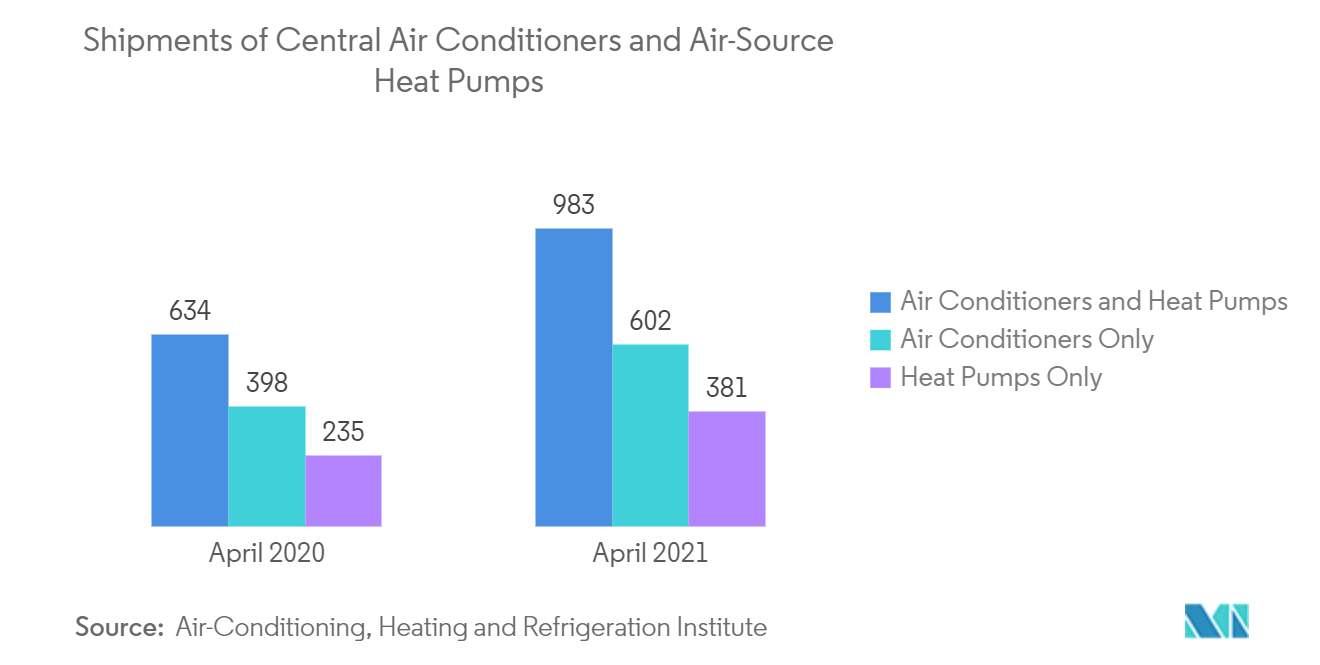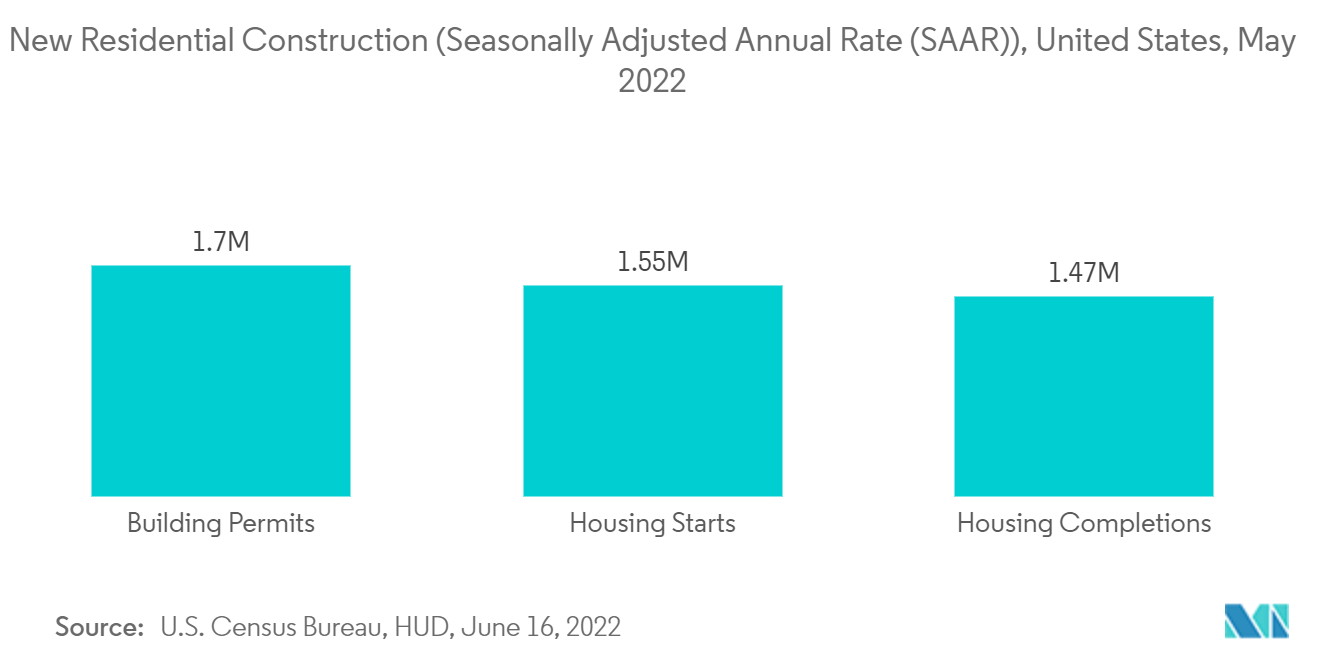Market Trends of United States Heat Pump Industry
This section covers the major market trends shaping the US Heat Pump Market according to our research experts:
Air Source Heat Pumps are Expected to Hold a Major Market Share
- The air source heat pump (ASHP) takes the electricity input, extracts the heat from ambient air, and gives hot water up to 90 degrees Celsius. Due to the extraction of heat from the ambient air, the ambient gets cooler. Thus, the requirement for both hot water and cold air is driving the growth of air-source heat pumps.
- There are two main types of ASHP, which are air-to-water and air-to-air. An air-to-air heat pump absorbs heat from the outside air and then transfers it directly into houses via a fan system to heat a room. At the same time, air-to-water heat pumps absorb heat from the outside air and then transfer it via the central heating system to provide hot water heating, radiator, or underfloor heating in an indoor space (or all three). Thus, choosing the type of ASHP determines the type of heat distribution system one needs.
- These pumps have been used for many years in nearly all parts of the United States. Until recently, they have not been used in areas that experienced extended periods of subfreezing temperatures. However, in recent years, air-source heat pump technology has advanced to offer a legitimate space heating alternative in colder regions.
- For instance, according to the US Department of Energy, when entire units were replaced in the Northeast and Mid-Atlantic regions, the Northeast Energy Efficiency Partnerships found that the annual savings when using an air-source heat pump were around 3,000 kWh (or USD 459) when compared to electric resistance heaters and 6,200 kWh (or USD 948) when compared to oil systems. When displacing oil (i.e., the oil system remains but operates less frequently), the average annual savings are near 3,000 kWh (or about USD 300). Such instances are likely to augment the market growth further.
- Further, the demand for air conditioners are reducing that is increasing opportuinties for the heat pump vendors. for instance according to Air-conditioning,heating and refrigeration institute the US shipments of air conditioners decreased 1.6% in April 2022 and accounted for 592,889 units, down from 602,723 units shipped in April 2021.

Residential sector is expected to have significant share
- For homes without ducts, air-source heat pumps are also available in a ductless version called a mini-split heat pump. Also, a particular type of air-source heat pump called a reverse cycle chiller generates hot and cold water rather than air, allowing it to be used with radiant floor heating systems in heating mode.
- Geothermal heat pumps achieve higher efficiencies by transferring heat between the house and the ground or a nearby water source. The geothermal heat pump cost more to install, but geothermal heat pumps have low operating costs because they take advantage of relatively constant ground or water temperatures. Moreover, it offers benefits such as it can reduce energy use by 30%-60%, control humidity, are sturdy and reliable, and fit in a wide variety of homes.
- Furthermore, a new heat pump for residential systems is witnessing gradual growth in the country, which is an absorption heat pump, also called a gas-fired heat pump. It uses heat as its energy source and can be driven by a large variety of heat sources. In addition, residential absorption heat pumps use an ammonia-water absorption cycle to provide heating.
- Further, The US Census Bureau and the U.S. Department of Housing and Urban Development jointly announced that the residential building construction is increasing, for instance, in May 2022, privatelyowned housing completions were at the annual rate of 1,465,000 which was 9.1 percent (±22.6 percent) above the revised April estimate of 1,343,000. Thus driving opportunites for the vendors in the market.

